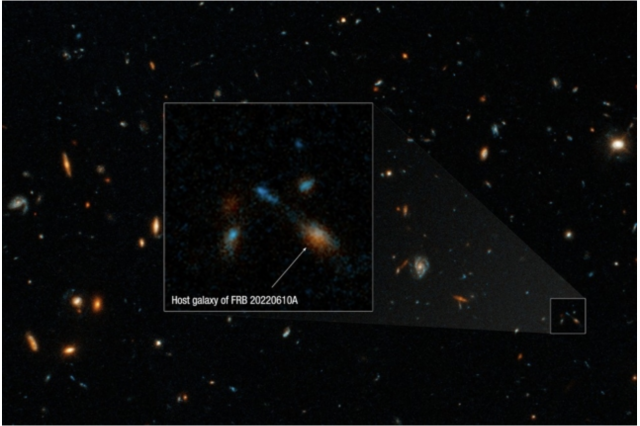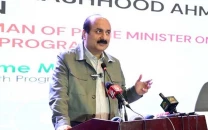Hubble unveils unexpected origin of brightest fast radio burst
It originated from group of seven ancient galaxies, approximately five billion years old, suggesting a merger process

The Hubble Space Telescope has revealed a highly unusual fast radio burst (FRB) coming from a cluster of merging ancient galaxies, surprising astronomers.
Detected on June 10, 2022, by the Square Kilometer Array Pathfinder in Western Australia, this fast radio burst (FRB) is different because it comes from a group of old galaxies, not just one like most FRBs. This FRB was brighter than the usual radio waves from whole galaxies, even though these bursts usually last just a very short time.
This event's uniqueness was further highlighted by its energy level, which was four times greater than any previously recorded FRB, as identified by subsequent observations from Chile's Very Large Telescope. The source of FRBs is still unknown, but theories suggest they involve interactions between massive, compact objects like black holes or neutron stars.
Conventionally, FRBs are linked to individual galaxies, but this FRB's analysis led to an unexpected revelation. The Hubble Space Telescope's investigation showed it originated from not just one but a group of seven ancient galaxies, approximately five billion years old, suggesting a merger process. This discovery was made possible due to Hubble's acute precision and sensitivity.
Lead researcher Alexa Gordon of Northwestern University emphasized the importance of Hubble's imaging in pinpointing the FRB's exact origin, which otherwise would have remained a mystery. This unusual source environment offers a new perspective in understanding FRBs.
Researchers are hopeful that future, more advanced radio telescopes like the Square Kilometer Array, currently under construction in Australia and South Africa, will further aid in discovering and understanding FRBs in various environments. The need to find more FRBs, both near and far, is crucial to solving their mystery, as Gordon notes.



















COMMENTS
Comments are moderated and generally will be posted if they are on-topic and not abusive.
For more information, please see our Comments FAQ